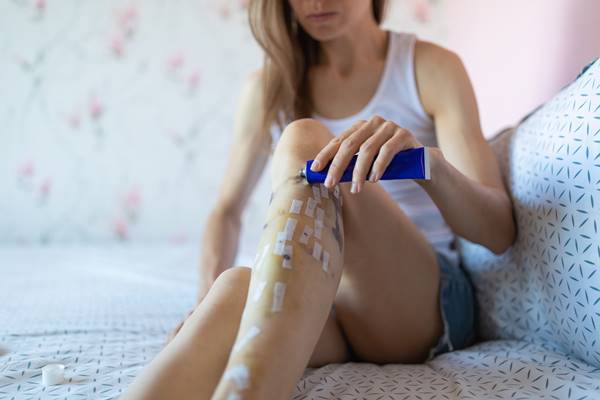While varicose veins are primarily a cosmetic concern for some individuals, they can pose significant health risks if left untreated.
The Impact of Varicose Veins on Overall Health
The impact of varicose veins on overall health can be significant, extending beyond mere cosmetic concerns. These enlarged and twisted veins can cause discomfort, pain, and heaviness in the legs. In some cases, they may lead to more serious complications such as blood clots or ulcers. Moreover, varicose veins can affect mobility and quality of life by limiting physical activities due to discomfort or embarrassment.

The condition may also have psychological effects on individuals, causing self-consciousness or decreased self-esteem. While not life-threatening in most cases, it is essential to address varicose veins promptly to prevent potential complications and improve overall well-being. Seeking medical advice is crucial for effective management and appropriate treatment options tailored to individual needs.
Potential Complications of Untreated Varicose Veins
Untreated varicose veins can potentially lead to various complications that can significantly impact an individual’s health and quality of life.
One potential complication is the development of blood clots, known as deep vein thrombosis (DVT). These clots can travel to other parts of the body and cause serious conditions such as pulmonary embolism.
Additionally, untreated varicose veins may result in chronic venous insufficiency, where the valves within the veins become weakened or damaged, leading to blood pooling in the legs. This condition can cause leg ulcers, skin discoloration, and even infections.
Furthermore, prolonged varicose vein symptoms like swelling and pain may hinder mobility and interfere with daily activities.
Varicose Veins and the Increased Risk of Blood Clots
Varicose veins, a common condition characterized by swollen and twisted veins, not only cause discomfort and cosmetic concerns but also pose health risks. One significant risk associated with varicose veins is an increased likelihood of developing blood clots. When blood flow becomes sluggish due to damaged or weakened valves within the veins, the chances of clot formation rise. These clots, known as deep vein thrombosis (DVT), can potentially travel to other parts of the body and cause serious complications such as pulmonary embolism.
Individuals with varicose veins should be vigilant about symptoms like pain, warmth, redness, or swelling in the affected leg, as these may indicate a blood clot. Seeking medical attention promptly is crucial to mitigate the potential risks associated with varicose veins.
Chronic Venous Insufficiency: A Common Result of Varicose Veins
Chronic venous insufficiency (CVI) is a prevalent complication associated with varicose veins. It occurs when the valves in the veins become damaged or weakened, leading to poor blood flow back to the heart. As a result, blood pools in the affected veins, causing them to enlarge and become varicose. CVI can cause symptoms such as swelling, leg pain, heaviness, and cramping.
If left untreated, it may progress to more severe complications like skin ulcers and infections.
Additionally, CVI increases the risk of blood clots forming in the affected veins.
Early diagnosis and appropriate management of varicose veins are crucial to prevent or manage chronic venous insufficiency and its potential health risks.
Varicose Veins and their Association with Leg Ulcers
Varicose veins, a common condition characterized by enlarged and twisted veins, can lead to various health complications. One significant concern associated with varicose veins is their potential link to leg ulcers. When blood pools in the affected veins, it increases pressure on the surrounding tissues and impairs blood circulation. Over time, this chronic venous insufficiency can cause skin changes, such as discoloration, hardening, and ultimately the development of leg ulcers.
These open wounds are painful and slow to heal, significantly impacting an individual’s quality of life.
Therefore, early detection and proper management of varicose veins are crucial in preventing their association with leg ulcers and minimizing the potential health risks they pose.
Varicose Veins and the Risk of Developing Deep Vein Thrombosis (DVT)
Varicose veins, commonly seen as unsightly bulging veins on the legs, can pose a serious health risk by increasing the likelihood of developing deep vein thrombosis (DVT). DVT occurs when blood clots form in the deep veins of the legs and can potentially lead to life-threatening complications.
Varicose veins contribute to this risk due to their weakened and enlarged nature, which impairs proper blood circulation and increases the chances of clot formation. When left untreated, varicose veins can worsen over time, exacerbating DVT risk.
It is crucial to address varicose veins promptly through medical intervention or lifestyle modifications to reduce the risk of developing DVT and its associated complications.
Prevention And Treatment Options For Varicose Veins
Prevention and treatment options for varicose veins are essential in minimizing the associated health risks.
Leading a healthy lifestyle can significantly reduce the chances of developing varicose veins. Regular exercise, particularly activities that promote leg movement, such as walking or swimming, helps improve blood circulation and strengthens leg muscles.
Maintaining a healthy weight is also crucial, as excess weight puts additional pressure on the legs and veins.
For individuals who already have varicose veins, several treatment options are available. Compression stockings can be worn to apply pressure on the legs, aiding in blood flow and reducing discomfort.
Sclerotherapy involves injecting a solution into affected veins to shrink them.
Laser therapy is another option where laser energy is used to seal off problematic veins.